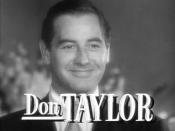TO: Board of Directors
FROM: Ashley Swenson, CFO of Gainesboro Machine Tools Corporation
DATE: September 20, 2005
RE: Recommendation on Gainesboro's Dividend Policy
INTRODUCTION
Gainesboro Machine Tools Corporation is a leading designer and manufacturer of machinery parts. After a history of predictable dividend and earnings growth, Gainesboro's financial position struggled in the early 2000s. From 2000 to 2002, Gainesboro's dividends exceeded earnings until 2003. Gainesboro declared a small dividend in 2004 despite great losses. Gainesboro has yet to declare dividends through two consecutive quarters in 2005 and investor confidence is shaken. Gainesboro is also transitioning into a growth firm, which must be considered in the company's dividend policy.
DIVIDEND PAYOUT POLICY
The four proposed dividend payout policies have been analyzed as seen in Appendix A-D. The unused debt capacity was calculated for each scenario. Under the 40% dividend payout policy, the firm must significantly increase borrowing due to the high dividend payments.
As such, the firm will inevitably exceed the targeted debt-equity ratio of 40% for years 2006 to 2011. In order to maintain the dividend payout, the firm must reduce capital expenditures throughout these periods. The alternative payout policies feature lower dividend payments thus do not exceed the targeted debt capacity. Naturally, the zero dividend policy contains the highest ending unused debt capacity of $372.54M. However, higher debt will entail increased tax shield benefits. Under the 40% dividend payout policy, the firm will experience a present value tax shield benefit of approximately $7.3M.
Zero Payout
Pros: Gainesboro can use this cash to invest in the advanced technologies required for CAD/CAM. Investors will see this move as Gainesboro entering the technology and growth market instead of a being traditional value company. It is typical for growth stocks to not pay a dividend and instead focus on capital appreciation by using...


